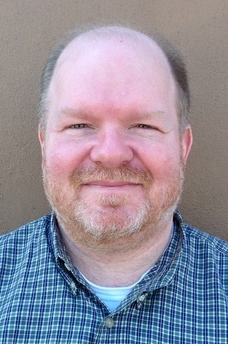Including ...The Psychology of Deterring Attackers–Part I • President’s Message • Attorney Question • Book Review • Editor's Notebook • About this Journal
Get eJournal PDF: click here
The Psychology of Deterring Attackers–Part I
An Interview with William Aprill
Interview by Gila Hayes
Self defense aims to stop victimization before an attack can start. Although widely endorsed, little training is given in verbal deflection, de-escalation and deterrence. Mental health clinician and self-defense instructor William Aprill of New Orleans, LA, has contributed much to our understanding of avoiding and interrupting violence and he provides a bridge between armed citizens and mental health professionals, two communities that often fail to recognize the value of the other.
Aprill describes himself as having a foot in both worlds, commenting, “Both think that their side of the fence is terribly important, and they both overestimate their ability to opt out of the effects of the other. I can’t tell you how many times I have worked with mental health professionals, even those who work with violent offenders, who don’t really think anything bad, particularly violence, is ever going to happen to them. That just strikes me as bizarre. At the same time, I run into armed citizens who don’t really think that mental health is ever going to really impact their world one way or another. They think that they’re squared away on the gun and on the self defense side of things and that is all they really need to think about,” he told me recently.
Aprill worked in law enforcement as a local sheriff's deputy as well as a Special Deputy US Marshal in the Eastern District of Louisiana before completing graduate, post-graduate and fellowship training in mental health. He has over 20 years experience as a licensed professional across the spectrum of care, from institutional management and program development to long-term individual therapy; from addictive disorders to his current private practice focus on post-traumatic stress and depth psychology.
I first heard Aprill speak at a Rangemaster Tactical Conference. His knowledge and very diverse experience yield instruction that is extremely applicable to situations Network members may face. First, Aprill is an insatiable learner, and starting from his first private sector training with Massad Ayoob decades ago under the Lethal Force Institute curriculum, he has continued training across a wide spectrum of defensive skills to this day. As a result, his advice blends psychology and good self-defense tactics so that as a student, his lectures always provided immediately applicable skills and strategies.
President’s Message
by Marty Hayes, J.D.
First off, please hear me when I tell you that I can both sympathize and empathize with all those Network members who have been financially impacted by the government response to the COVID-19 pandemic. While we here at the Network have weathered the storm pretty well and have been able to resume office functions with fairly restrictive procedures in place, we are doing okay. Revenue/renewals have been down, but we have a good reserve financially, and will come through this just fine.
Attorney Question of the Month
![]()
This month’s topic is continued from last month when we introduced a question we are currently being asked by Network members who are concerned, as are so many, with exposure to the coronavirus. We greatly appreciated our affiliated attorneys’ comments on the following:
With the threat of contracting the COVID-19 virus on everybody’s minds, members are asking what is the appropriate response to someone threatening them with exposure to COVID-19? May an armed citizen legally use deadly force to stop such a threat?
Book Review
The Conscience of the Constitution: The Declaration of Independence and the Right to Liberty
By Timothy Sandefur
Cato Institute; 2013
ISBN-13: 978-1939709691
$9.95 paper back; $1.95 eBook, 200 pages
Reviewed by Gila Hayes
We know our nation’s Constitution and can quote long passages that prohibit government from infringing on our beloved liberties, but have we invested much thought to its foundations? The book I read this month defined how our Declaration of Independence, which predated the US Constitution by a decade, set the standard our nation’ leaders carried forward while adapting from the Articles of Confederation to the Constitution, then detailed in the Bill of Rights, and finally either upheld or eroded by subsequent Supreme Court decisions.
Editor’s Notebook
![]()
by Gila Hayes
I’m always surprised when members respond to one of my editorial rants, especially when I’m simply expressing my frustration with those who ignore the seriousness of going armed. Last month when I opined that questions about shooting to stop intentional exposure to the coronavirus were terribly short sighted, I was surprised to receive several opinions in response.
An attorney friend from Pennsylvania was first to express his parallel thoughts, explaining that he didn’t think the attorney question of the month about shooting to stop intentional exposure was sufficiently realistic to merit submitting a response.
Basic social skills and training in “less-than-deadly force options” is the better choice if faced with a threat of intentional infection, he stressed. Get some different kinds of training other than the gun, he suggested, because while, in his words, ““What can I do?’ is a very good question. ‘Can I shoot?’ is just crazy.”
About this Journal

The eJournal of the Armed Citizens’ Legal Defense Network, Inc. is published monthly on the Network’s website at http://armedcitizensnetwork.org/our-journal. Content is copyrighted by the Armed Citizens’ Legal Defense Network, Inc.
